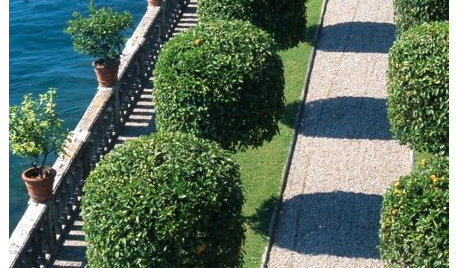Prunus mume - hardiness, disease?
hairmetal4ever
9 years ago
Related Stories

GARDENING GUIDESPrunus Virginiana Thrives Under Deciduous Trees
Plant chokecherry for showy white flowers favored by native bees in spring, and to provide nesting habitat and food for birds
Full Story
GARDENING GUIDESPlant Black Cherry Trees for the Birds and Bees
Plant Prunus serotina in the Central and Eastern U.S. for spring flowers, interesting bark and beautiful fall color
Full Story
GARDENING GUIDES9 Low-Growing Hedges That Make Good Neighbors
Define garden areas or borders without blocking the view, with these evergreen shrubs that take kindly to trimming
Full Story
SPRING GARDENING7 Spectacular and Practical Spring-Flowering Trees
Put on a beauteous show in the garden with a landscape tree awash in flowers — just do your homework first
Full Story
FARM YOUR YARDIf You Have Room for Only One Fruit Tree ...
Juice up a small garden with one of these easier-care or worth-the-effort fruit trees for a mild climate
Full Story
SIDE YARD IDEASNarrow Trees for Tight Garden Spaces
Boost interest in a side yard or another space-challenged area with the fragrance and color of these columnar trees
Full Story
GARDENING GUIDES8 Native Shrubs for Year-Round Bird Feeding
It’s not just about berries. These plants provide insects for birds and seasonal interest for gardeners
Full Story
LANDSCAPE DESIGN5 Structural Plants to Frame Your Garden Beautifully
Consider these trees and shrubs live building blocks, providing structure and definition in even a small garden
Full Story
GARDENING GUIDES6 Plants That Beat Butterfly Bush for the Wildlife Draw
It's invasive, a nonnative and a poor insect magnet. Check out these better alternatives to butterfly bush in the garden
Full Story
TREESHow to Buy Healthy Trees and Shrubs
A healthy young plant with a strong form is more likely to do well in your yard. Here’s what to look for at the nursery
Full StoryMore Discussions








Embothrium
hairmetal4everOriginal Author
Related Professionals
Windham Landscape Architects & Landscape Designers · West Chester Landscape Architects & Landscape Designers · Westwood Landscape Contractors · Fort Atkinson Landscape Contractors · Secaucus Landscape Contractors · Wilsonville Landscape Contractors · East Norriton Landscape Contractors · Cedar Park Siding & Exteriors · Annapolis Siding & Exteriors · Lenexa Siding & Exteriors · Lombard Siding & Exteriors · West Milford Siding & Exteriors · Ashland Decks, Patios & Outdoor Enclosures · Greeley Decks, Patios & Outdoor Enclosures · Green Bay Decks, Patios & Outdoor Enclosuresdavidrt28 (zone 7)
davidrt28 (zone 7)